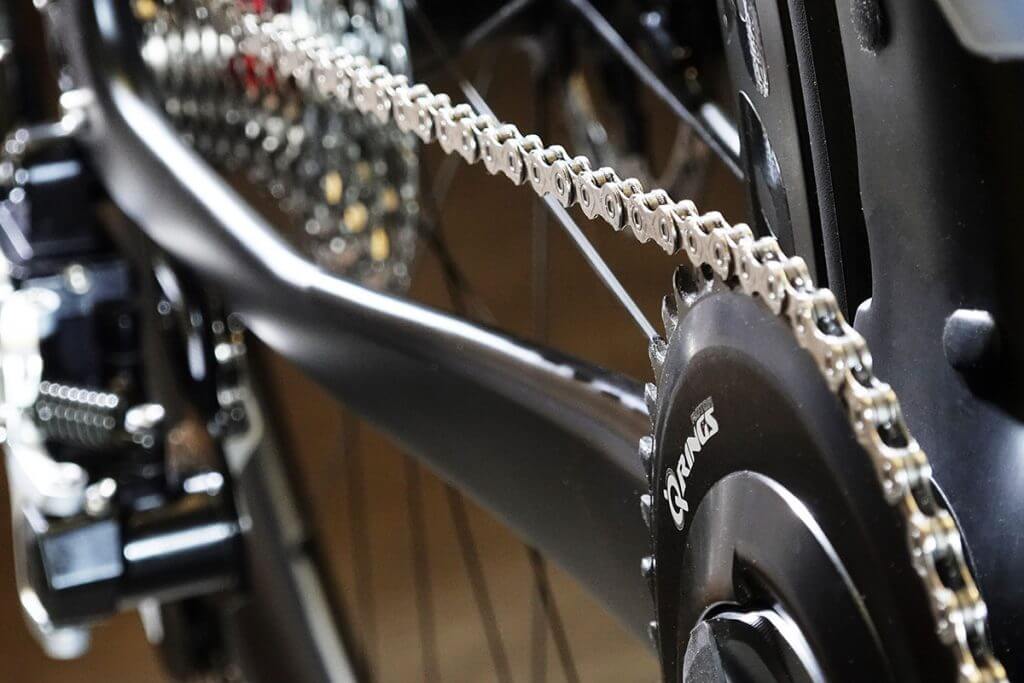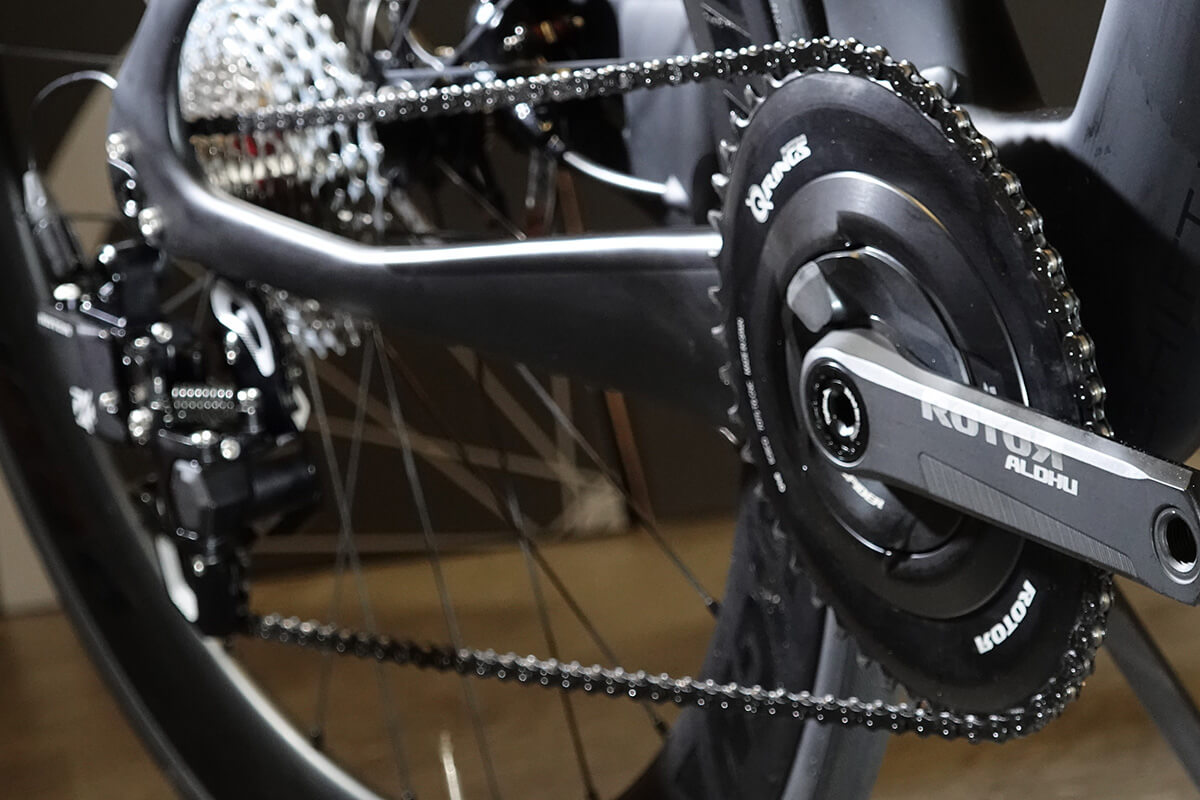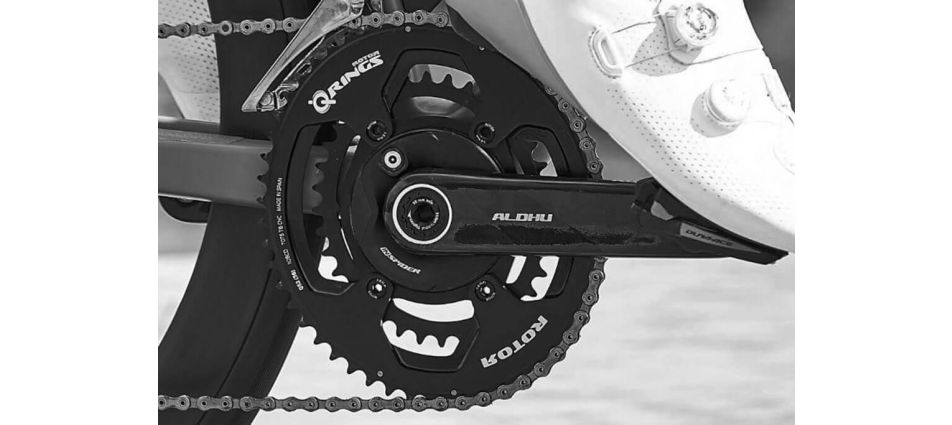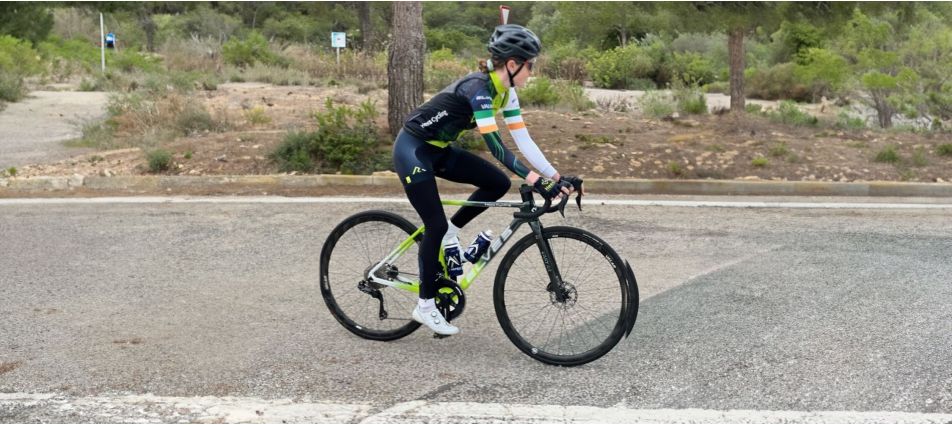The importance of Q Factor
The Q Factor is the distance between the crank arms, measured from its outermost part. The point where the Q Factor is measured is right where the pedals are threaded and this measurement is what you see in the specifications of our ROTOR cranks. The Q Factor varies depending on the width of the axle, as well as by the design of the crank itself. For example; ROTOR Aldhu Carbon road cranks with a standard axle have a Q Factor of 147mm and with an offset axle, the Q Factor grows to 152 mm.
The importance of this value
The Q Factor is a fundamental value at a biomechanics level, because that width directly affects how our hips have to open or close when placing our feet on the pedals. In biomechanical studies, they correlate the optimal width of your hips when pedaling when you are on the saddle, with the Q Factor of your cranks, as well as the positioning of the cleat and the length of the pedal axis.
The pedals and where the cleat is located have a lot to do with the Q Factor, because when we pedal, the line that forms between our hip joint, passing through the knee, to end in the pedal shaft and the cleat, is one of the most important points not only to take advantage of each pedaling cycle, but also to get the maximum power and prevent injuries.


In general, the Q Factor tends to be a low value, since at the performance level, we are interested in our hips not opening when pedaling, since we will not be able to obtain all the muscular and biomechanical strength in the pedaling cycle. That is why at ROTOR we work to offer cranks in all modalities with a minimum Q Factor possible, which can ensure that you can find the most suitable, not only for your bike, but also for the way you pedal.
An example is the new eKAPIC cranks, which provide a plus that until now was almost impossible to achieve on an e-bike, a narrower Q Factor. In current ebikes, the Q Factor is usually too wide, something that does not help us neither ergonomically, nor at the level of taking advantage of our power, because our legs pedal too open. We are sure you have encountered this feeling whilst riding an e-bike.
For this reason, the Q-Factor in the new eKAPICs has been lowered as much as possible to the following measurements, depending on the manufacturer: Bosch®; 171mm, Brose® MAG, 170 / 184mm, Fazua® Evation, 169mm and Polini® E-P3, 174mm.
The Q Factor and chain line
In addition, the Q Factor is linked to the chain line, another of the measurements that we always reflect in the specifications of our cranks. The chain line is the distance between the midpoint of the single chainring, or the midpoint on double or triple chainrings, with respect to the midpoint of the bike frame. That is, with respect to the axis of symmetry of the bike in a vertical plane. It is important to always know and respect this chain line, so that the gears work perfectly.


This chain line measurement is linked to the Q Factor and the rear axle width that determines a chain line measurement.
At ROTOR we recommend that you not only know the Q Factor of your current cranks, but if you have the opportunity to do a biomechanical study, do it to be able to know your ideal Q Factor in order to avoid injuries due to incorrect pedaling and be able to get the most possible performance out of your bike.




